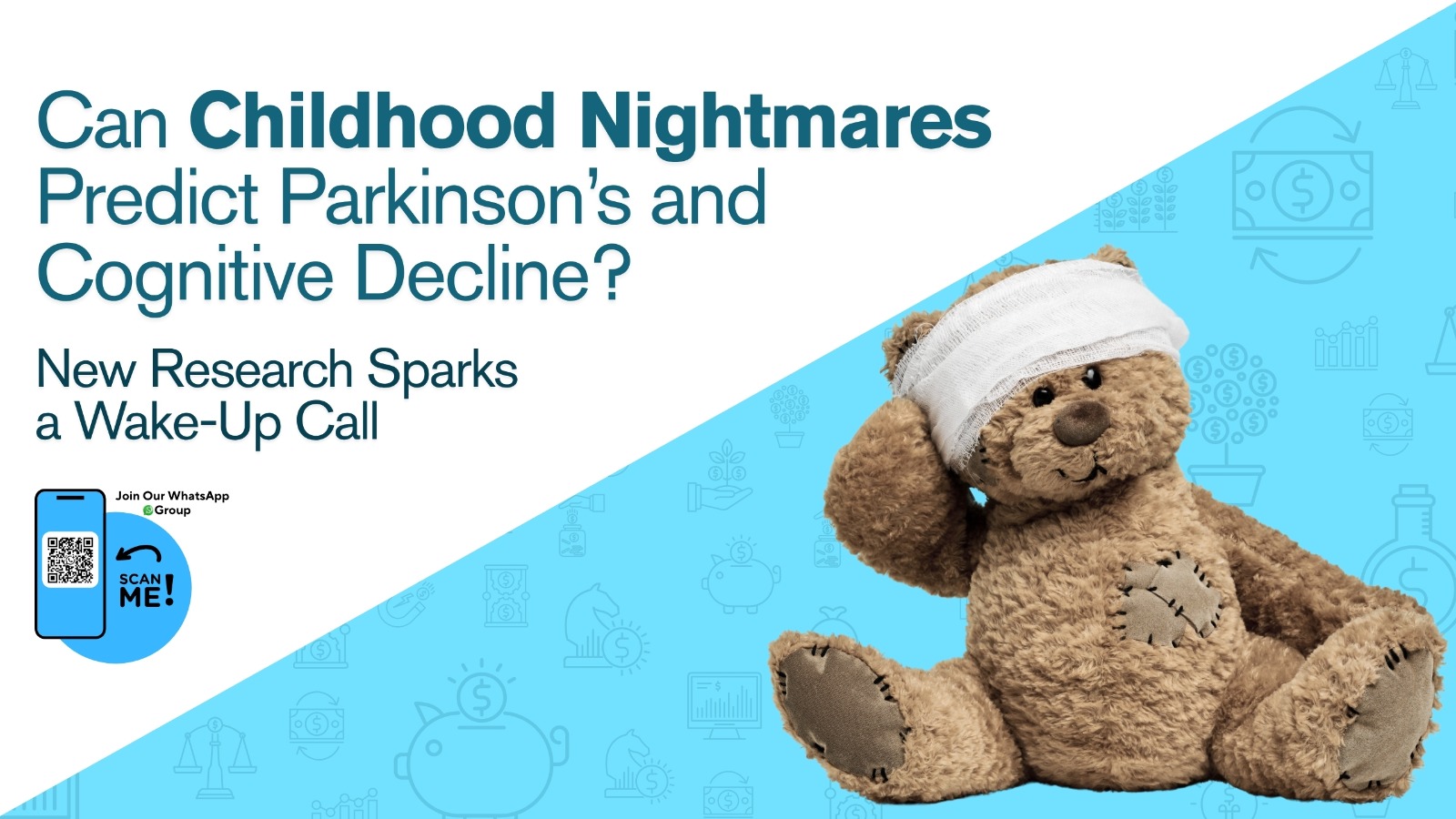Can Childhood Nightmares Predict Parkinson’s and Cognitive Decline? New Research Sparks a Wake-Up Call
Written By: Dr. Janhvi Ajmera

Imagine if something as ordinary and overlooked as your child’s nightmares could signal a risk for serious neurological diseases 40 years down the line. Groundbreaking research from the 1958 British Birth Cohort Study has uncovered a startling association: persistent distressing dreams in childhood may predict a higher risk of developing cognitive impairment or Parkinson’s disease (PD) by age 50.
For medical professionals and researchers, this study reframes how we view pediatric sleep disturbances;not just as transient childhood fears, but as potential early neurodevelopmental biomarkers.
The Study in a Nutshell
This large-scale longitudinal analysis followed 6991 people born in a single week in 1958 in the UK. Researchers tracked participants from birth to age 50, with specific attention to parental reports of “bad dreams or night terrors” at ages 7 and 11.
By age 50:
- 267 participants (3.8%) had developed cognitive impairment or PD.
- Those with persistent distressing dreams at both time points had an 85% increased risk of these outcomes.
- The odds of being diagnosed with PD were nearly seven times higher for this group.
- And these results held up even after adjusting for a wide range of variables, including socioeconomic background, birth weight, childhood anxiety, and early-life infections.
From Nightmare to Neuromarker?
The strength of this study lies not just in its design, but in the conversation it opens: can recurring bad dreams in childhood act as red flags for neurodegeneration decades later?
The researchers propose several potential explanations:
1. Early brain changes:
Although unlikely, some forms of subtle neurodevelopmental alterations may begin far earlier than traditionally believed, affecting REM sleep regulation and emotional processing.
2. Genetic overlap:
Genes linked to nightmare frequency may also intersect with those associated with neurodegenerative diseases like Alzheimer’s and PD.
3. Causal pathways:
Frequent nightmares can disrupt sleep architecture, impeding glymphatic clearance mechanisms that are critical for flushing out neurotoxic proteins like amyloid-beta and alpha-synuclein.
Why This Matters for Clinicians and Researchers
Traditionally, neurodegenerative diseases have been viewed through the lens of mid-to-late life risk factors. But this study challenges that notion, suggesting that the roots of these conditions may extend into early childhood.
This has far-reaching implications:
- One should not dismiss Pediatric sleep complaints lightly.
- Screening and early intervention protocols could shift from reactive to preventive.
- Long-term monitoring of children with persistent nightmares may allow for early detection of vulnerable individuals.
- Cross-disciplinary collaboration between pediatricians, neurologists, sleep researchers, and psychologists is now more vital than ever.
Could Treating Nightmares Prevent Disease?
If the association proves to be causal, the implications are revolutionary. Interventions like Imagery Rehearsal Therapy, CBT for insomnia, or even low-dose pharmacotherapy in children may not just improve sleep quality but potentially reduce long-term neurological risks.
Preventive neurology might one day include dream therapy as a core component of risk mitigation strategies for dementia and PD.
Limitations to Consider
- The assessment of nightmares relied on maternal report rather than objective sleep measures.
- The diagnosis of PD was self-reported and not clinically verified.
- The number of PD cases at age 50 was small, reflecting the earlier age of outcome assessment relative to typical disease onset.
That said, the findings remain statistically significant and robust; even after adjusting for confounders and missing data using multiple imputation.
The Road Ahead
This study doesn’t close the book, it opens a new chapter. Future research should:
- Replicate findings in diverse global cohorts
- Investigate neurobiological mechanisms linking childhood dream patterns to adult brain health
- Evaluate whether treating nightmares in youth alters the trajectory of neurodegeneration
Final Thoughts
In the world of clinical research, few discoveries are as quietly powerful as this one. By tuning into what our children see in their sleep, we may be peering decades into their neurological future.
For now, the message is clear: listen to the nightmares. They may be whispering what science is only just beginning to understand.
